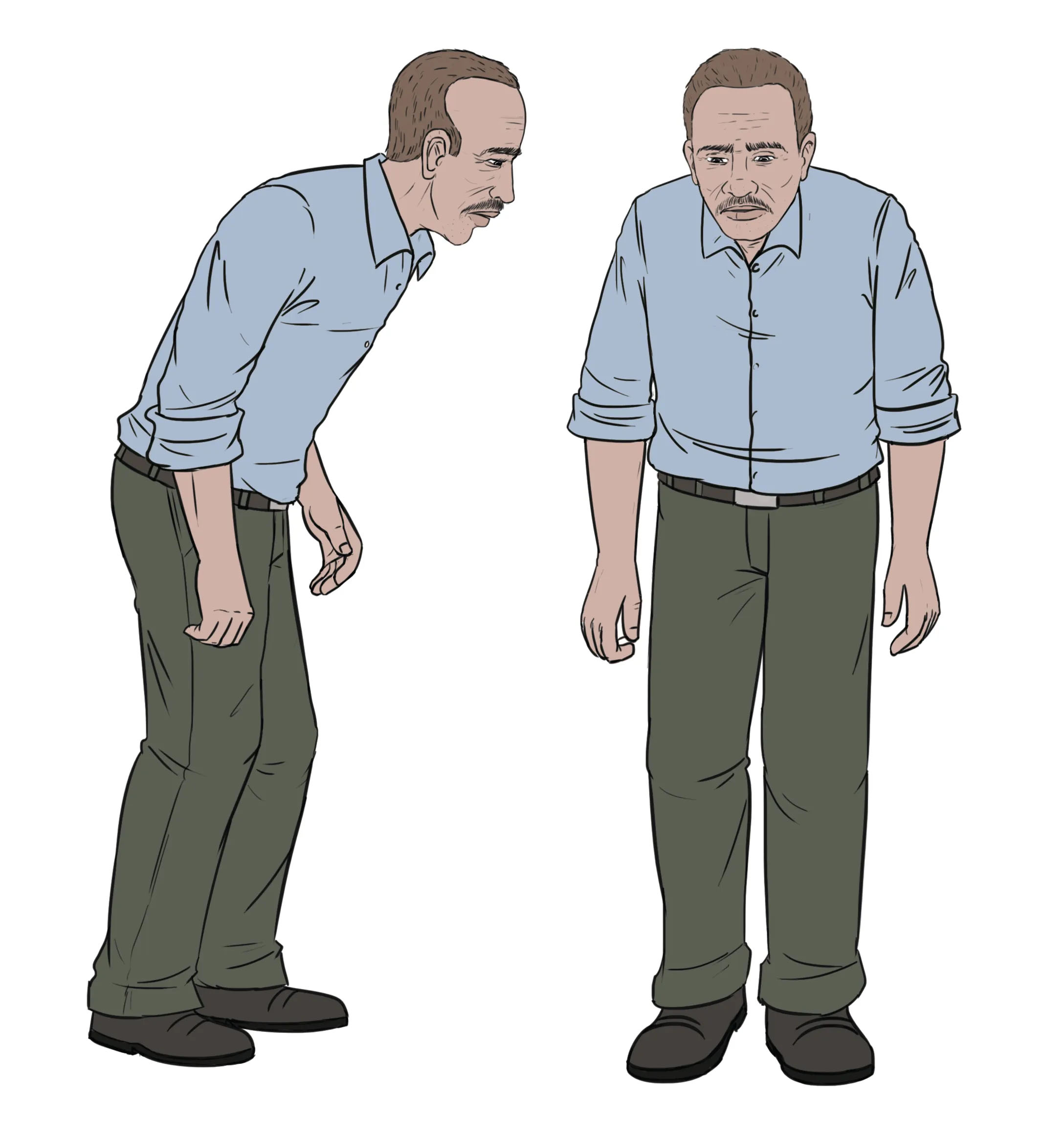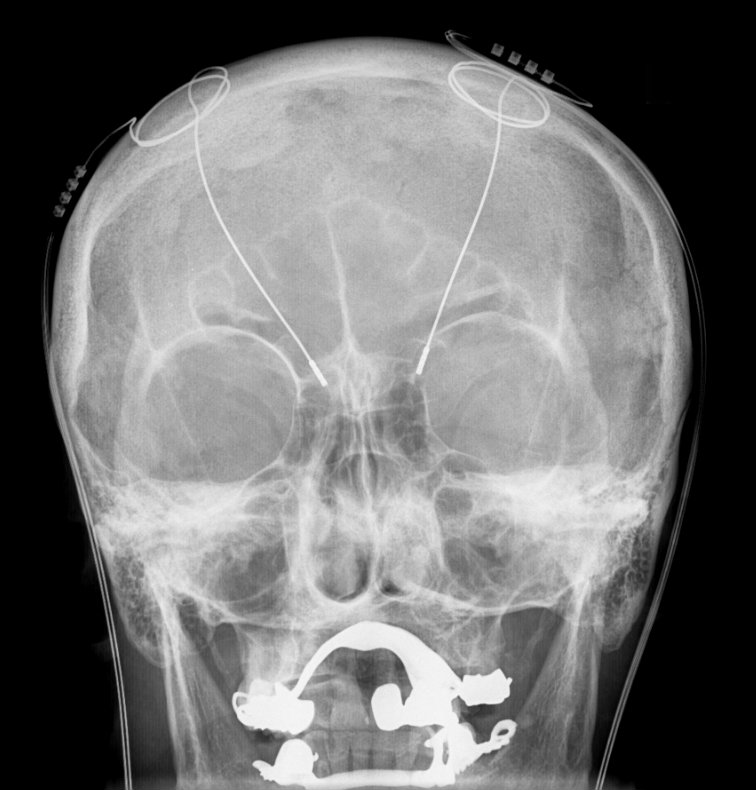11.7: Parkinson’s Disease
Like Alzheimer’s disease, Parkinson’s disease is a neurodegenerative disease. It was first characterized by James Parkinson in 1817. Each year, 50,000-60,000 people in the United States are diagnosed with the disease. Parkinson’s disease causes the loss of dopamine neurons in the substantia nigra, a midbrain structure that regulates movement. Loss of these neurons causes many symptoms, including tremor (shaking of fingers or a limb), slowed movement, speech changes, balance, posture and gait problems, and rigid muscles. The combination of these symptoms often causes a characteristic slow, hunched, shuffling walk (Figure 13). Patients with Parkinson’s disease can also exhibit cognitive and psychological symptoms, such as dementia or emotional problems (Clark et al., 2018).
Although some patients have a form of the disease known to be caused by a single mutation, for most patients the exact causes of Parkinson’s disease remain unknown: the disease likely results from a combination of genetic and environmental factors (similar to Alzheimer’s disease). Post-mortem analysis of brains from Parkinson’s patients shows the presence of Lewy bodies—abnormal protein clumps—in dopaminergic neurons. The prevalence of these Lewy bodies often correlates with the severity of the disease.
There is no cure for Parkinson’s disease, and treatment is focused on easing symptoms. One of the most commonly prescribed drugs for Parkinson’s is L-DOPA, which is a chemical that is converted into dopamine by neurons in the brain. This conversion increases the overall level of dopamine neurotransmission and can help compensate for the loss of dopaminergic neurons in the substantia nigra. Other drugs work by inhibiting the enzyme that breaks down dopamine. L-DOPA can have side effects such as headache, dizziness, psychosis, delusions, and even an increased risk of pathological gambling. Additionally, the effectiveness of L-DOPA typically declines after a few years and many symptoms become “dopa-resistant.”

Parkinson’s disease can also be treated with non-pharmacological methods. For example, walking difficulties in Parkinson’s have been effectively treated with music or metronome cues (Hove et al., 2012). Dancing is also an effective technique for treating motor, cognitive, and emotional symptoms of Parkinson’s (Earhart, 2009).
An exciting and invasive tool for treating and relieving symptoms of Parkinson’s disease is Deep Brain Stimulation (DBS). DBS requires neurosurgery and a medical device called a neurostimulator that sends electrical impulses through wire electrodes implanted in the brain (Figure 14). For movement disorders, electrodes target brain structures involved in motor control. Rigidity, tremor, and dopamine-induced dyskinesia (uncontrolled involuntary movement) in people with PD are treated with stimulation in basal-ganglia-system structures, including the subthalamic nucleus (STN) or the internal segment of the globus pallidus (GPi). DBS to part of the thalamus is used to treat symptoms in PD (NINDS, n.d.). PD is treated by applying high-frequency (> 100 Hz) stimulation to the target site. The patient can typically control the stimulation; turning on the current often results in an almost immediate decrease in symptoms such as tremor, and turning stimulation off leads to a quick return of symptoms. Many videos on the internet demonstrate the sudden and dramatic effects of DBS.

Text Attribution:
This section contains material adapted from:
Clark, M.A., Douglas, M. & Choi, J. (2023). 35.5 Nervous System Disorders. In Biology 2e. OpenStax. Access for free at https://openstax.org/books/biology-2e/pages/35-5-nervous-system-disorders License: CC BY 4.0 DEED.
National Institute of Neurological Disorders and Stroke (NINDS) (n.d.). Deep brain stimulation (DBS) for the treatment of Parkinson’s disease and other movement disorders. https://www.ninds.nih.gov/about-ninds/impact/ninds-contributions-approved-therapies/deep-brain-stimulation-dbs-treatment-parkinsons-disease-and-other-movement-disorders Public Domain.
Media Attributions
- X-ray of the skull © Wikimedia is licensed under a CC BY-SA (Attribution ShareAlike) license
implanting electrodes within areas of the brain. The electrodes produce electrical impulses that affect brain activity to treat certain medical conditions.

